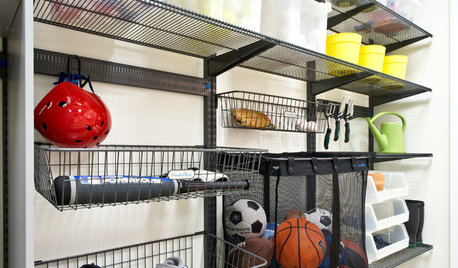Liquid Fert in a self-watering container?
jethrojames
15 years ago
Related Stories

GREEN BUILDINGJust Add Water: Rain Barrel Magic
Take your rainwater storage from practical to beautiful with a new breed of design-friendly rain barrels
Full Story
SAVING WATERXeriscape Gardens: How to Get a Beautiful Landscape With Less Water
Conserve water and make gardening much easier with the xeriscape approach’s 7 principles
Full Story
GREEN BUILDINGWater Sense for Big Savings
Keep dollars in your pocket and preserve a precious resource with these easy DIY strategies
Full Story
HOUSEKEEPINGTackle Big Messes Better With a Sparkling-Clean Dishwasher
You might think it’s self-cleaning, but your dishwasher needs regular upkeep to keep it working hard for you
Full Story
LANDSCAPE DESIGNCalifornia Says Goodbye to the Sprawling Ornamental Lawn
New state rules will effectively limit turfgrass to 25 percent of the landscape in most new and renovated yards
Full Story
LANDSCAPE DESIGN15 Great Ideas for a Lawn-Free Yard
End the turf war for good with hardscaping, native grasses and ground covers that save water and are easier to maintain
Full Story
GREEN BUILDINGHow to Harvest Rainwater for Your Garden
Conserve a vital resource and save money by collecting stormwater for irrigation in a barrel or tank
Full Story
GREEN BUILDINGHouzz Tour: Going Completely Off the Grid in Nova Scotia
Powered by sunshine and built with salvaged materials, this Canadian home is an experiment for green building practices
Full Story
CONTAINER GARDENSPatio-Perfect Berry Bushes Like You’ve Never Seen
Small enough for pots but offering abundant fruit, these remarkable bred berries are a boon for gardeners short on space
Full Story
GREAT HOME PROJECTSHow to Make Your Garage a Storage Powerhouse
New project for a new year: Add shelving and containers to get your stuff off the garage floor — and still have room for the car
Full Story








justaguy2
jethrojamesOriginal Author
Related Professionals
El Sobrante Landscape Contractors · Federal Way Landscape Contractors · Hoffman Estates Landscape Contractors · Lexington Landscape Contractors · Lorain Landscape Contractors · Manhattan Landscape Contractors · Palatine Landscape Contractors · Waltham Landscape Contractors · Irvington Landscape Contractors · Glen Ellyn Solar Energy Systems · Melville Solar Energy Systems · Carol City Window Contractors · Payson Window Contractors · Falls Church Fence Contractors · Milwaukie Fence Contractorsjustaguy2
jethrojamesOriginal Author
justaguy2
jethrojamesOriginal Author
justaguy2
jethrojamesOriginal Author
justaguy2
jethrojamesOriginal Author
justaguy2
jethrojamesOriginal Author
justaguy2
hummersteve